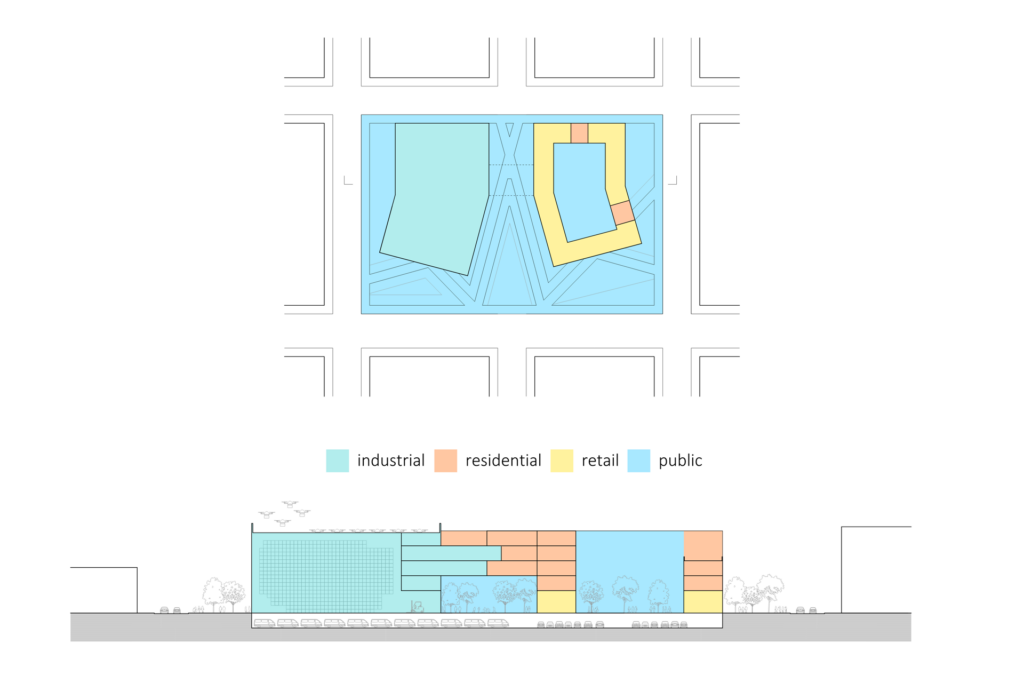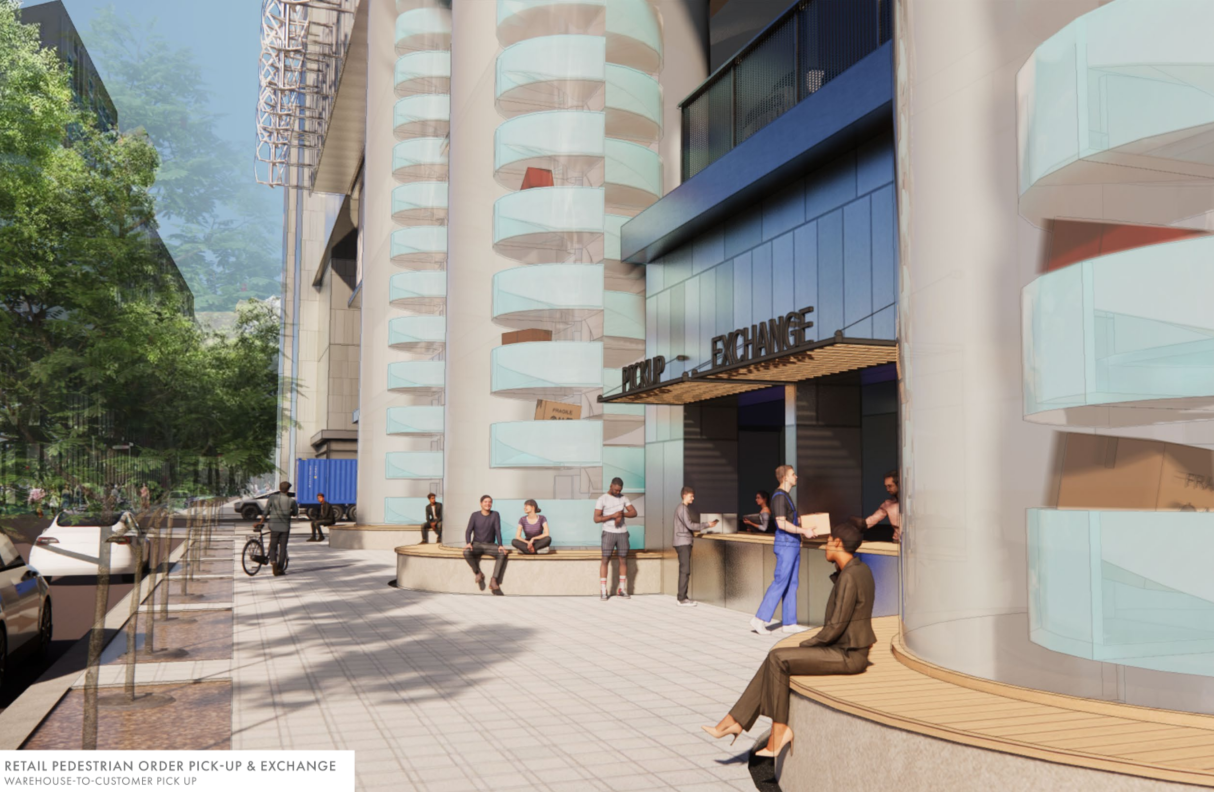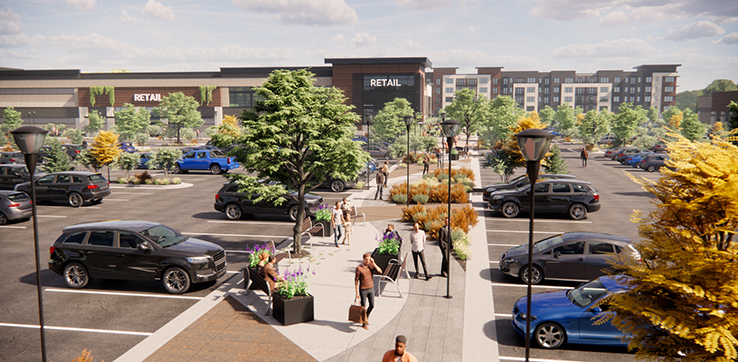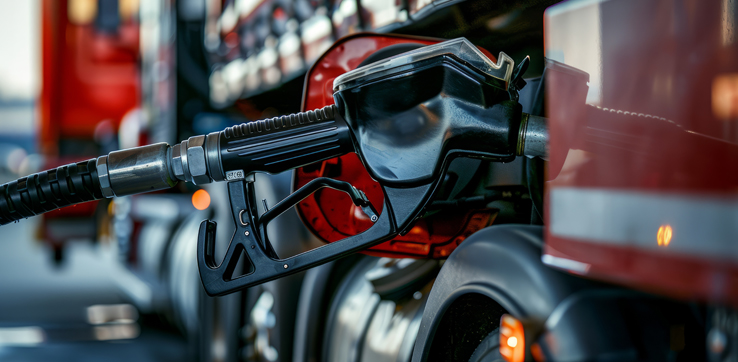Exploring the Urban Warehouse: Supporting the Local Community and Environment
BRR has seen an increased interest by owners in moving the warehouse closer to and even directly into the urban core. Our team has been working with clients to integrate warehouse locations into dense urban areas like Miami, San Francisco, and New York, and we explore how these warehouses will interact with the residents, retail, and businesses of that city (while also keeping sustainability top-of-mind). BRR’s industrial team has been exploring a conceptual design of an urban mixed-use warehouse space. The team hosted a company-wide, in-house design charrette to get a deeper look into how BRR can help our clients further incorporate a warehouse within the urban core.
Demand for Urban Warehouses
There is instant gratification in going into a physical store and leaving with a product in hand immediately. In our current society, consumers search for low shipping costs and streamlined shipping speed. Incorporating a warehouse directly within the urban core aids the desire for instant gratification and receiving packages in a few hours while paying minimum shipping fees. The most expensive part of the whole supply chain is last-mile delivery.

Supporting the Environment
It’s uncommon to find access to undeveloped land within the urban core of most cities but there are ample opportunities to repurpose underutilized or vacant spaces which also supports the sustainability of the project and the community. By reusing an existing site, fewer resources and environments are impacted, which can also avoid the challenges and costs of building from the ground up. For example, if an owner decides to remodel a vacant office building for a multi-use, multi-story urban warehouse, the space also can include retail and/or residential spaces. This not only supports the environment but also the surrounding community as it brings a multi-purpose building into an area that was previously lacking.
One main consideration while taking over a building is the available footprint. Rather than thinking in square footage, our team explores what’s possible vertically and with cubic feet as this allows more opportunity in the space – especially within an urban location. While designing during the charrette, teams were challenged to work only within an existing city block. Building vertically began to change the thinking around equipment, cross docks, semi-traffic, and movement of the product.
Another key factor related to sustainability is the walkability component this urban warehouse proposes. Increasing walkability reduces the emission levels and travel time for residents, employees, and the shipping vehicles from the warehouse. Also, the multi-use building provides places for people to live, work, and play, all within a small, walkable area of the city. This encourages people to spend more time within their local community.

Supporting the Local Community
Adding multi-use, multi-story buildings that include warehouse, retail, and residential spaces, will strengthen interconnectedness and community within cities. One design element that was explored in the charrette was to create a convenient pick-up location on site that connects the warehouse to the residents and surrounding community. This would also make the function of the warehouse more efficient in cost and time, which benefits both the client and the consumer.
Another design element is to incorporate a community space that encourages interactions on a pedestrian level. These mixed-use buildings will increase the lifestyle of live/work/play. This creates a destination for employees and residents to enhance their daily experience.
The multi-use, multi-story building will bring in warehouse, retail, and residential market sectors into one area. This will benefit the local community by creating more jobs and revenue. BRR has expertise in these market sectors and has worked extensively with many clients over the years to develop warehouse, retail, and residential projects.
Looking Ahead
BRR continues to push limits to elevate the everyday experience, so we continue to bring innovative design solutions to our clients’ projects. While there are still many factors to explore when thinking through the future of the urban warehouse, our team sees the benefits and countless possibilities of driving this warehouse model into the urban core and how this can be a win-win for both owners and consumers.




